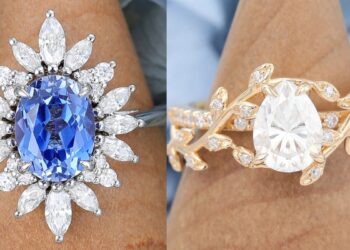Picture a myriad of colors, with hues and degrees of each shade. What would the world be if it weren’t flamboyant? Like waves of emotions, colors hold meaning and reflect certain ideas and sentiments. When thinking of the East, brown, beige, and earthy tones come to mind. And when thinking of ancient monarchies and royalty, the first thing that comes to mind is royal gold and purple.
Even in everyday activities, color can hold a special significance. In sports, teams often have lucky colors that they associate with victory, donning jerseys and gear in shades that bring them good fortune on the field. In fashion, some individuals wear specific colors or accessories to boost their confidence or attract positive outcomes.
“See a penny, pick her up, and all day you’ll have good luck all day.” Pennies may be silver, and clovers may be green, but luck is luck, and colors can help in between. Color and luck also intertwine in the world of gambling. Many casino enthusiasts believe certain colors bring them good fortune while playing slots or table games. Visit https://thunderpick.io/en/casino/slots and you’ll witness many thrilling slot games with captivating visuals and colorful logos. Online players prefer games with certain colors over others based on their perception of these colors and how they connect them with jackpots.
This article will explore the significance and symbolism behind colors and how to incorporate them into daily life.
The Significance of Color in Culture
Around the world, we can find traces of every color being used, yet never in the same way. Culturally speaking, colors hold native symbolism in each region. They are employed in festivals or on special occasions, as humans use colors to attract luck, convey certain feelings, and correlate ideas. These interpretations have given rise to semantic meanings in language, as seen in phrases like “seeing red” or “feeling blue.”
For example, in Feng Shui, the color purple is utilized in furniture to attract wealth, as it is believed to possess a high vibration and abundance. Ancient Indian texts, such as the Vedas, introduce the concept of chakras, which associates colors with emotional states, organs, and energy. The color green, linked to the heart chakra, signifies luck and fortune, among other qualities. Individuals would meditate and employ colors like green and gold to activate their chakras and attract prosperity, wealth, and luck.
Red: The Color of Luck
In many cultures, red is celebrated as a fertility, happiness, and luck color. However, this color sometimes carries a slightly intense meaning, such as anger. In Chinese culture, a legendary creature known as Nian is described as “half ox, half lion, and a unicorn.” This creature would terrorize the villagers annually. Eventually, people discovered that it feared noise, lights, and the color red. As a result, they started wearing red to scare it off, and thus red became associated with the Chinese New Year.
When combined with the color green, red symbolizes Christmas festivities. Traveling down towards southeast Asia, Japan thinks of red as happiness and good luck; brides would wear a Red Kimono on their special day to attract luck and a bright future.
Gold: The Color of Prosperity
Whether it is Goldie locks or gold chains, Gold is a color of magnitude, attracting the eye; this color holds power to it as a symbol of luck and wealth. “Old is gold” is a saying that employs the color gold to symbolize abundant knowledge that comes about with age.
Ancient Egyptians believed their pharaohs were unique in having gold bones, making them immortal. The first record of the color gold dates back to 1300 BC, and it was made by mixing yellow, brown, and orange. Helios (God of the Sun) would ride his fiery horses in a golden chariot wearing golden-colored ensembles. Furthermore, religious institutes would use gold to fabricate objects necessary for ceremonial rituals or celebrate certain holidays, such as Diwali in India; individuals would purchase gold in hopes of becoming rich. More so, gold symbolizes triumph; shown in golden trophies and rewards handed to those who won.
Green: The Color of Good Fortune
Rooted in Earth, growing on branches, and painting the meadows, Green is a color of rebirth, growth, abundance, luck, and much more. If we travel to the land of the Scots, the birth home of Saint Patrick, Saints Patrick’s Day is a national holiday commemorating the bishop; in this festival, green is often worn, and clovers are often searched for, as it was told that ST. Patrick used the three-leafed clover to explain the holy trinity. More so, Celtic priests would hold three-leaf clovers to help them evade evil spirits; four-leafed clovers were a symbol of protection and good luck; seeing as they were so hard to find, those who stumbled upon them meant they were lucky.
Blue: Serenity and Luck
Color of the vast skies, home of the wonderous ocean life, and color of many company’s logos; blue is a color of loyalty and calmness. It’s been longly associated with honesty and serenity. In Chinese culture, blue is youth, courage, and integrity. During the Ming and Qing dynasties, Chinese people made China using white and blue porcelain to attract good luck and health. More so, blue symbolizes yin and yang, the harmony and balance in life, the binary opposition in life, and the opposite energies of the world.
A fun fact, although colors tend to have gender associations, the color blue, which is usually related to masculinity and giving birth to a boy, in China, blue is thought to be a feminine color. Moreover, blue hair dye compositions have been introduced to women worldwide.
Lastly, everything around us has a hidden connotation; the more we observe, the clearer things become, and once knowledge of color has come about, surely any knowledge put to use will reap the reward.




